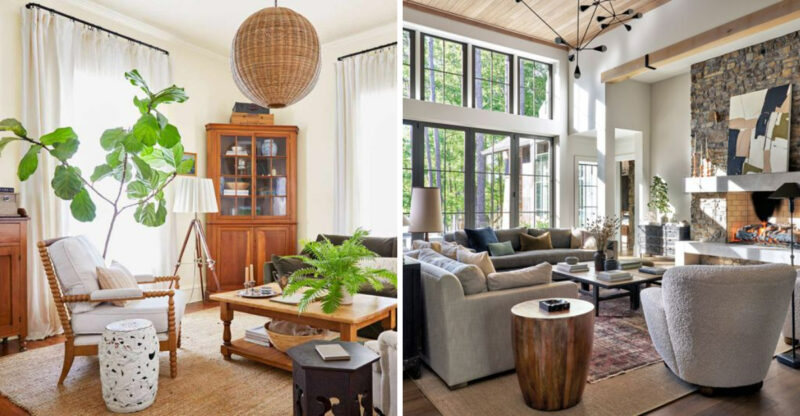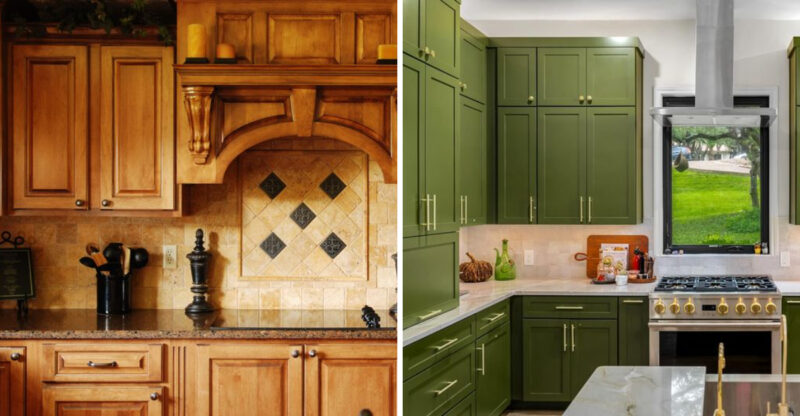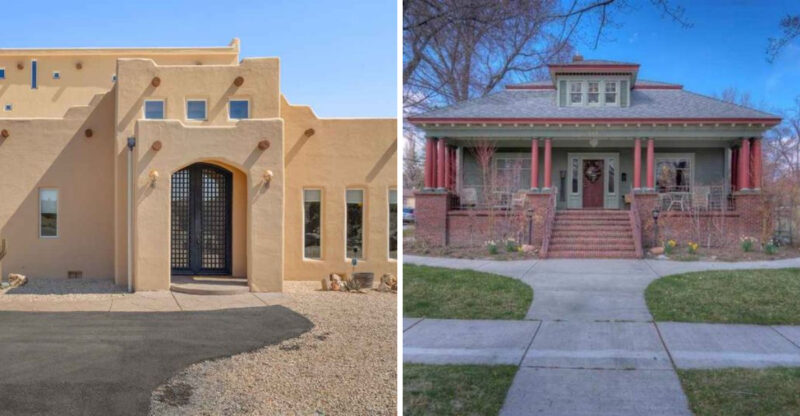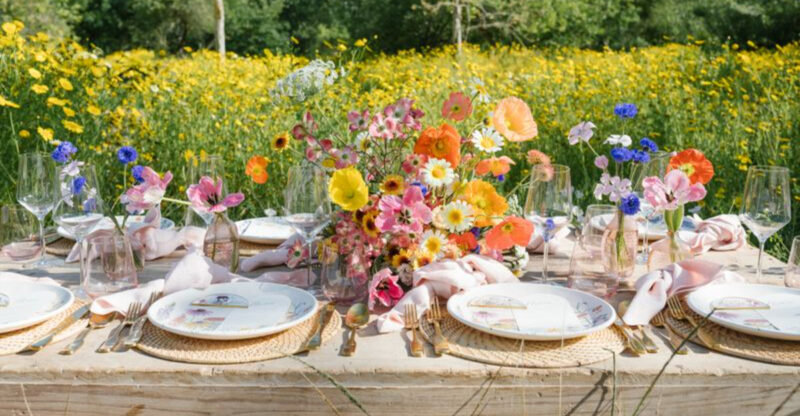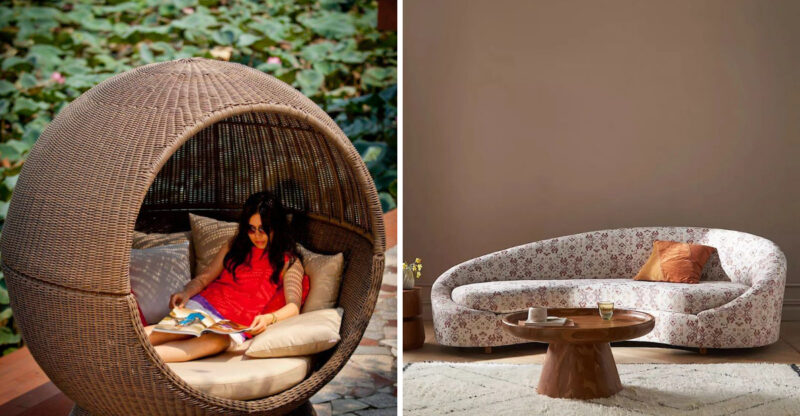16 Retro Kitchen Styles Designers Miss And 5 They Hope We Forget Forever

Kitchen design has evolved dramatically over the decades, leaving behind a trail of iconic styles that defined generations.
Some vintage elements have designers feeling nostalgic, wishing for their comeback in modern homes. Others, however, represent design missteps we’re better off leaving in the past.
Let’s explore the cherished retro kitchen features worth reviving and the questionable trends best kept in old photographs.
1. Checkerboard Floors
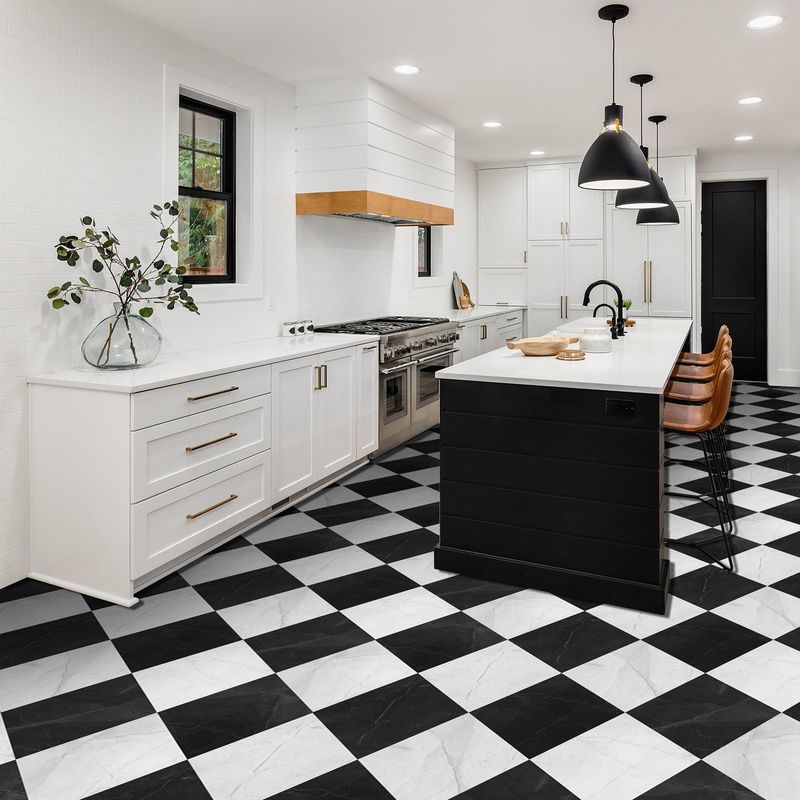
Walking into a kitchen with classic black and white checkerboard floors instantly transports you to a different era. The timeless pattern creates a strong visual anchor that somehow manages to feel both vintage and contemporary at once.
Designers appreciate how these floors pair beautifully with nearly any cabinet style or color scheme. The geometric precision adds character without overwhelming the space. Modern versions come in various materials beyond vinyl porcelain, ceramic, and even marble for luxury installations.
What makes checkerboard truly special is its chameleon-like ability to complement different design aesthetics, from mid-century modern to farmhouse chic.
2. Vintage Enamel Appliances
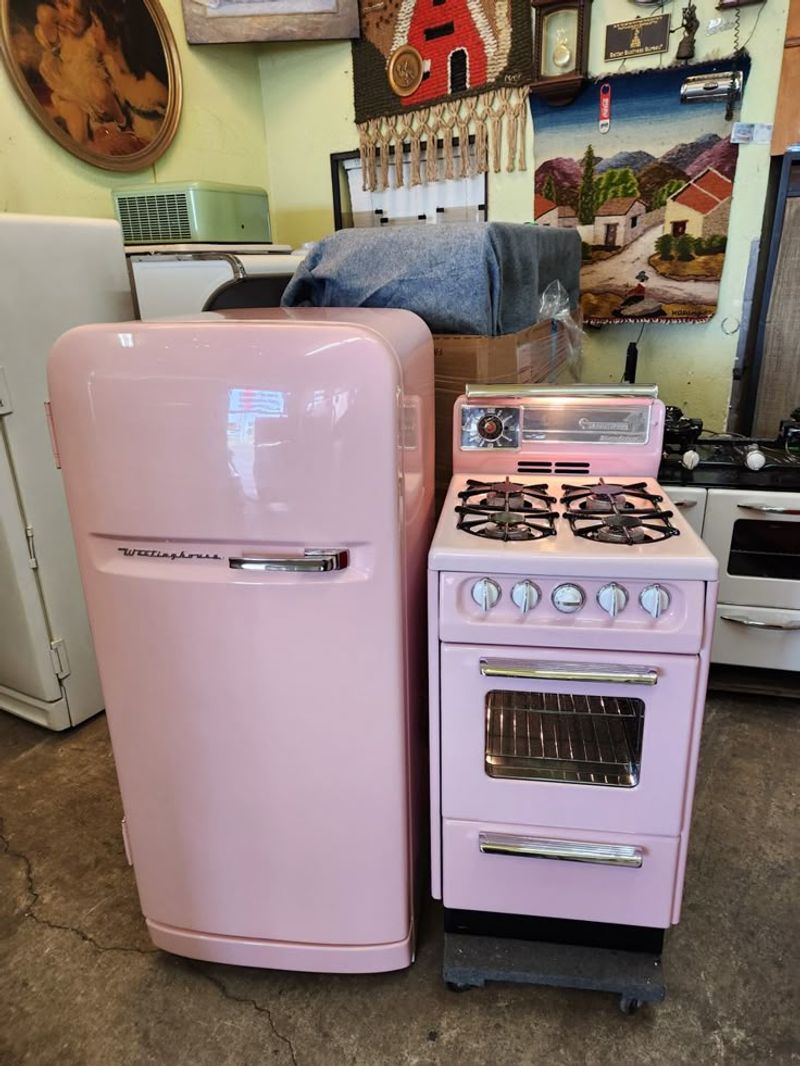
Colorful enamel stoves and refrigerators from brands like Big Chill and Smeg have recaptured designers’ hearts with their cheerful presence and surprising durability. Their rounded edges and glossy finishes bring warmth that stainless steel simply can’t match.
Many vintage enamel pieces were built to last generations, explaining why original 1950s models still function in homes today. The craftsmanship of these appliances reflects an era when things weren’t disposable.
Beyond their practical benefits, these statement pieces inject personality into kitchens dominated by neutral tones. Candy-colored refrigerators or cream-and-chrome stoves serve as conversation starters while delivering modern performance wrapped in nostalgic packaging.
3. Chrome-Edged Countertops
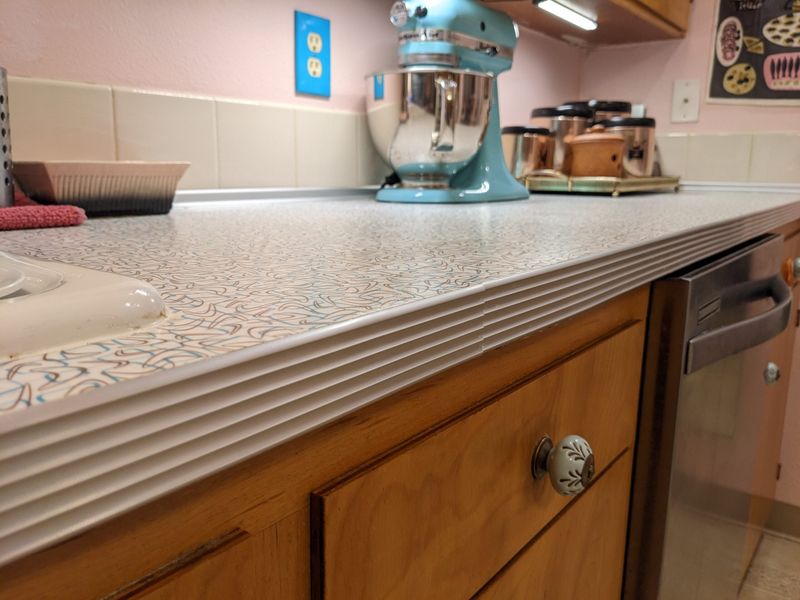
Remember those gleaming metal strips that outlined countertop edges in mid-century kitchens? This distinctive detail added a finished look while protecting vulnerable laminate edges from chips and wear. Chrome edging created clean, defined lines that visually organized the kitchen space.
The reflective quality caught light beautifully, adding a subtle sparkle that complemented the era’s love of shine and optimism. Today’s designers appreciate how this small detail can transform basic countertops into statement pieces.
Modern interpretations sometimes use brushed nickel or brass for a contemporary twist on this classic feature. When paired with solid-color laminate, these metal borders deliver retro charm without looking dated.
4. Pastel-Colored Cabinets
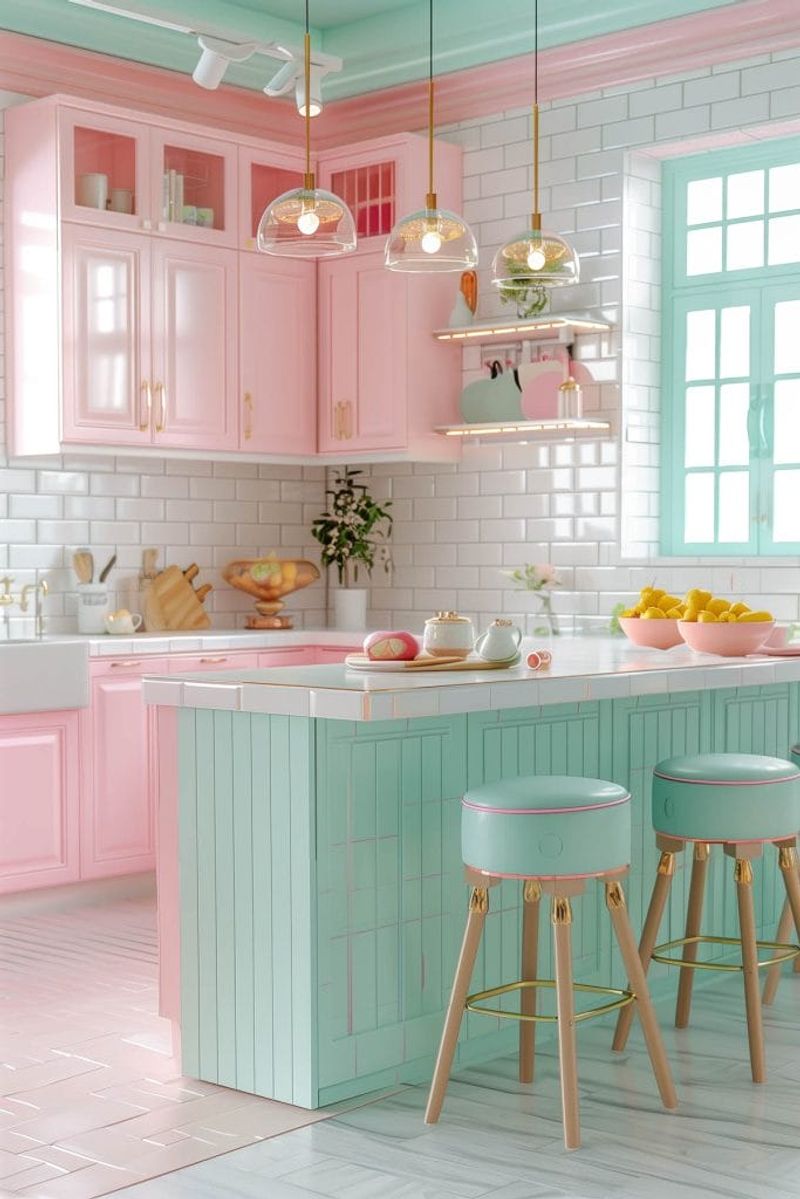
Soft mint, baby blue, and gentle pink cabinets once defined the cheerful post-war American kitchen. These delicate hues created spaces that felt optimistic and fresh during a time when homemaking was elevated to an art form.
Unlike today’s trend toward all-white kitchens, pastel cabinets infused personality without overwhelming the senses. They paired beautifully with the period’s white appliances and chrome accents. Designers now recognize how these subtle colors can brighten spaces without feeling childish when executed properly.
Modern interpretations often combine pastel lower cabinets with white uppers for balance. The nostalgic color palette connects us to a simpler time while still feeling surprisingly relevant in contemporary design.
5. Glass-Front Upper Cabinets
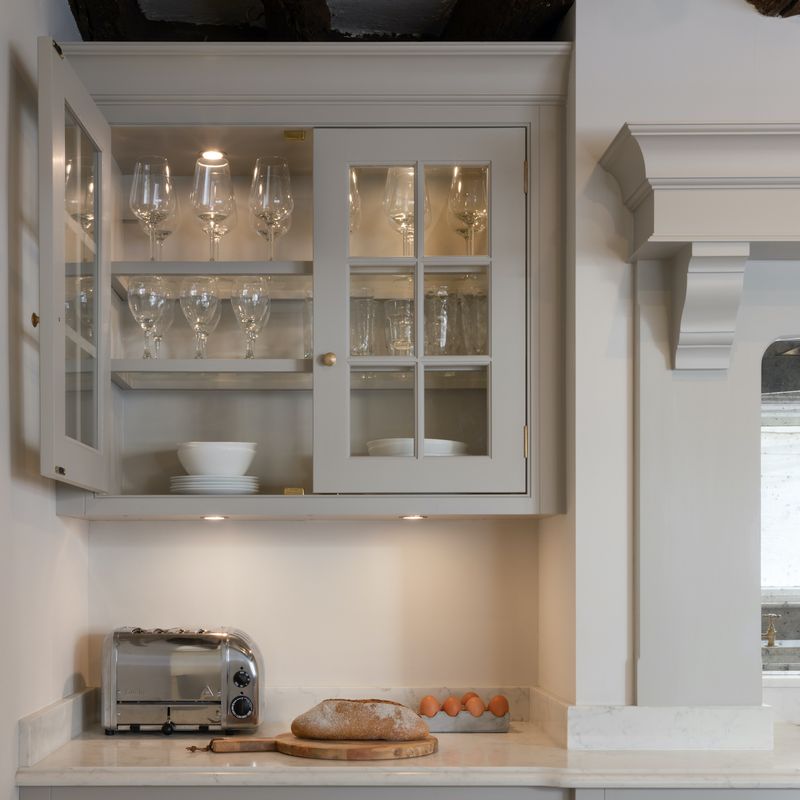
Glass-front cabinets showcasing neatly arranged dishware were once kitchen staples before minimalism pushed everything behind solid doors. These transparent displays invited personality into the heart of the home while keeping dust at bay.
Homemakers took pride in their curated collections of colorful Fiestaware or elegant china visible through these practical windows. The glass panels broke up wall expanses of wood or painted cabinets, creating visual breathing room. Today’s designers appreciate how these display opportunities encourage mindful collecting rather than endless accumulation.
Modern interpretations sometimes feature frosted or seeded glass for those wanting the lightness without full transparency. When illuminated from within, these cabinets transform everyday items into artful arrangements that tell the family’s story.
6. Retro Diner Barstools

Chrome-legged barstools with vinyl seats in juicy colors bring instant personality to kitchen islands and breakfast bars. Their curved backs and footrests weren’t just stylish – they were engineered for comfort during leisurely family breakfasts.
These iconic seats recall the optimistic post-war era when diners represented American prosperity and leisure. The spinning seat feature delighted children while making conversations more dynamic and accessible. Modern designers appreciate how these playful pieces can prevent a kitchen from feeling too serious or sterile.
Even in minimalist spaces, a pair of cherry-red diner stools adds a welcome pop of color and nostalgia. Their sturdy construction and timeless appeal explain why original pieces from the 1950s are now valuable collectibles worth restoring rather than replacing.
7. Tile Countertops with Metal Trim

Square ceramic tiles arranged in a grid pattern and framed with metal trim created practical work surfaces with undeniable character. Homemakers appreciated how these countertops stood up to hot pots and cutting without damage.
Available in countless colors from cobalt blue to sunny yellow, these tiled surfaces allowed for personalization long before custom options became mainstream. The metal trim served both decorative and functional purposes, protecting edges while adding a finished look. If maintained properly, these surfaces lasted decades explaining why many survive in vintage homes today.
Modern interpretations sometimes use larger format tiles or contrasting grout for updated appeal. Designers value how these countertops connect to architectural traditions while providing a handcrafted alternative to manufactured surfaces.
8. Linoleum in Fun Patterns
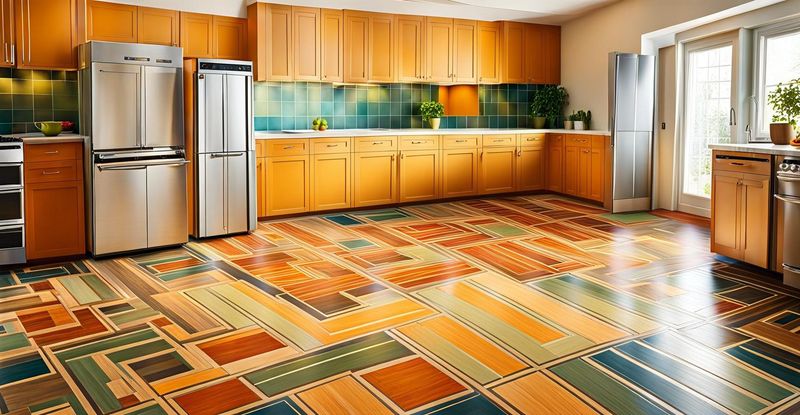
Before vinyl took over, genuine linoleum floors brought artistic patterns and incredible durability to American kitchens. Made from natural materials like linseed oil and cork dust, these floors were surprisingly eco-friendly before that term existed.
Homeowners loved the cushioned feel underfoot and the way patterns disguised inevitable kitchen spills. Marbleized swirls, speckled designs, and geometric patterns in vibrant colors energized the space without overwhelming it. Unlike vinyl, true linoleum develops a beautiful patina over time while remaining naturally antibacterial.
Today’s designers appreciate these sustainable qualities along with the material’s nostalgic charm. Modern manufacturers now offer updated patterns that reference mid-century aesthetics while complementing contemporary spaces – proving good design truly is timeless.
9. Patterned Vinyl Flooring

Vinyl flooring revolutionized kitchens with its affordability and endless design possibilities. Cheerful diamonds, faux terrazzo, and abstract patterns transformed floors into personality-filled foundations for the busiest room in the house.
Unlike today’s wood-look vinyl, these patterns celebrated their artificial nature with bold colors and playful designs. The water-resistant, easy-to-clean surface made perfect sense for family kitchens where spills were inevitable. Modern designers have rediscovered vintage-inspired vinyl patterns as alternatives to ubiquitous hardwood.
Today’s versions offer improved durability and installation methods while maintaining that retro charm. When paired with simple cabinetry, these statement floors become the room’s focal point – proving sometimes the best design ideas are worth revisiting.
10. Built-in Breakfast Nooks
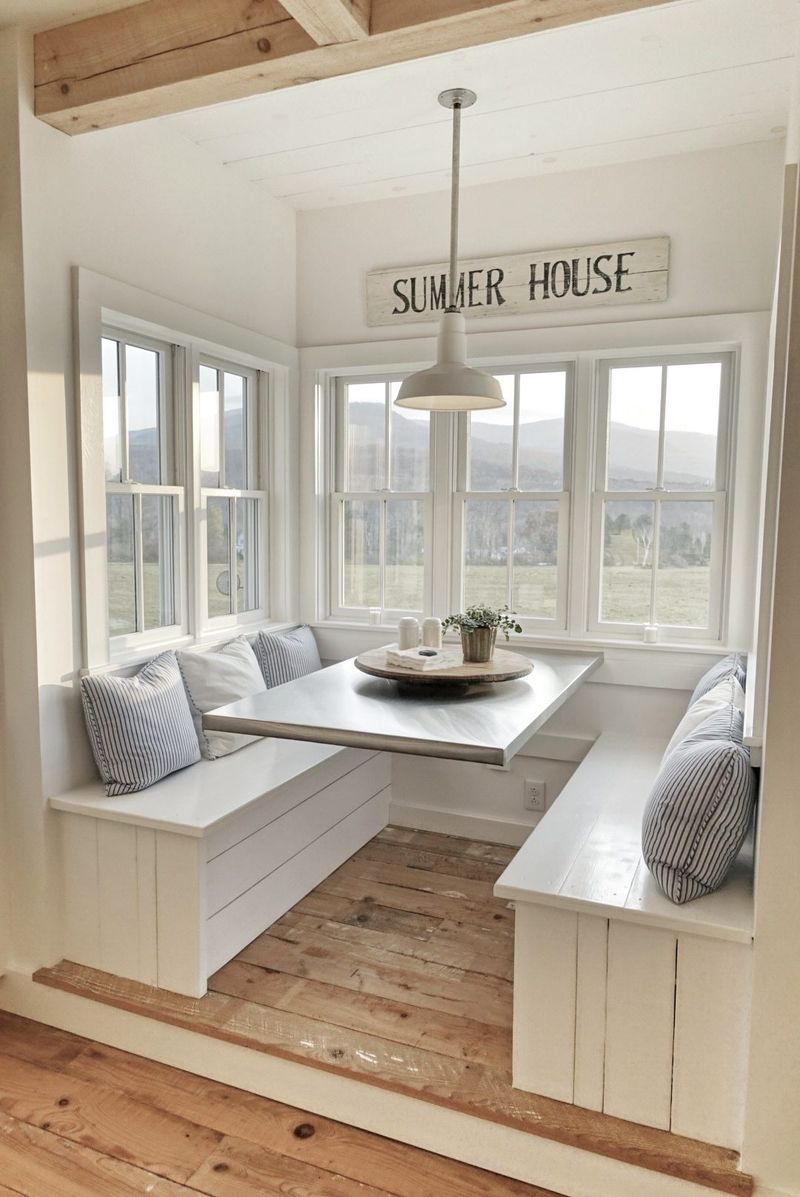
Tucked into kitchen corners, built-in breakfast nooks maximized space while creating cozy gathering spots for family meals. Their L-shaped bench seating accommodated more people than freestanding tables in the same footprint.
Storage beneath seat cushions provided smart solutions for tablecloths, rarely used serving pieces, or children’s activities. The permanent nature of these installations signaled the importance of family mealtime in daily life. Designers miss how these architectural features created natural conversation areas away from the cooking zone.
Modern interpretations sometimes incorporate charging stations or adjustable table heights for multi-purpose use. When updated with fresh upholstery and lighting, these charming corners blend nostalgia with practical functionality that open-concept kitchens often lack.
11. Vintage Metal Canisters
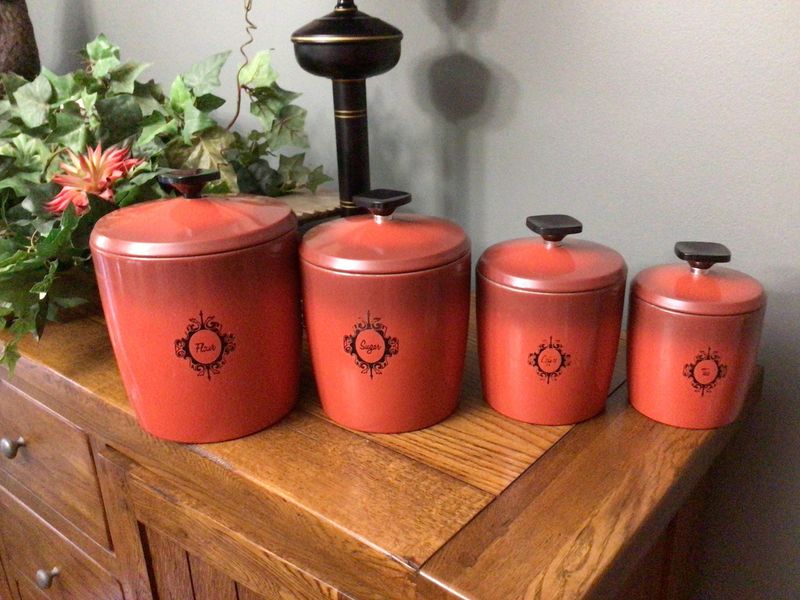
Colorful metal canisters labeled “Flour,” “Sugar,” “Coffee,” and “Tea” weren’t just storage – they were kitchen jewelry that brightened countertops. Their stackable design saved space while keeping staples fresh and accessible. Unlike today’s preference for hiding everything in cabinets, these cheerful containers were meant to be displayed proudly.
The coordinated sets in graduated sizes brought order and intention to busy cooking spaces. Designers appreciate how these functional objects double as decorative elements that express personality. Vintage sets in pristine condition now command collector prices, proving their enduring appeal.
Modern versions maintain the nostalgic silhouettes while offering better seals and sometimes updated typography perfect for those seeking retro charm with contemporary performance.
12. Scalloped Wood Trim Accents
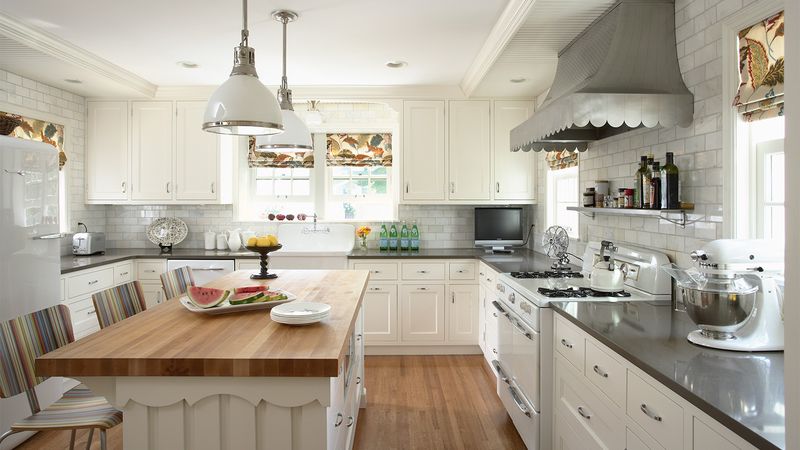
Delicate scalloped trim adorning cabinets, windows, and shelves added charm to utilitarian kitchen spaces. This handcrafted detail softened straight lines and reflected the craftsmanship valued in earlier eras. Often painted white against colorful walls or cabinets, these decorative borders created visual interest without overwhelming the space.
The repetitive curved pattern brought a subtle rhythm that felt both orderly and playful. Contemporary designers have rediscovered how these small architectural details can elevate simple spaces.
Modern interpretations might use scalloped trim more sparingly perhaps just on a range hood or island edge for a hint of nostalgia without veering into kitsch. When executed with restraint, these sweet details connect to design history while feeling surprisingly fresh.
13. Pull-Down Wall Lamps

Adjustable wall lamps with pull-down mechanisms brought focused task lighting exactly where needed. Their articulated arms extended over countertops for food prep, then tucked away when not in use. Unlike today’s fixed recessed lighting, these flexible fixtures acknowledged that cooking happens in different spots throughout the kitchen.
Their sculptural quality added visual interest to walls while serving a practical purpose. Designers appreciate how these lamps combined form and function in an honest, unpretentious way. Modern versions in brass or matte black finishes update the look while maintaining the ingenious mechanics.
When installed alongside contemporary lighting, these character-filled pieces create layered illumination that flat overhead lighting alone can’t achieve.
14. Rounded Fridge Designs
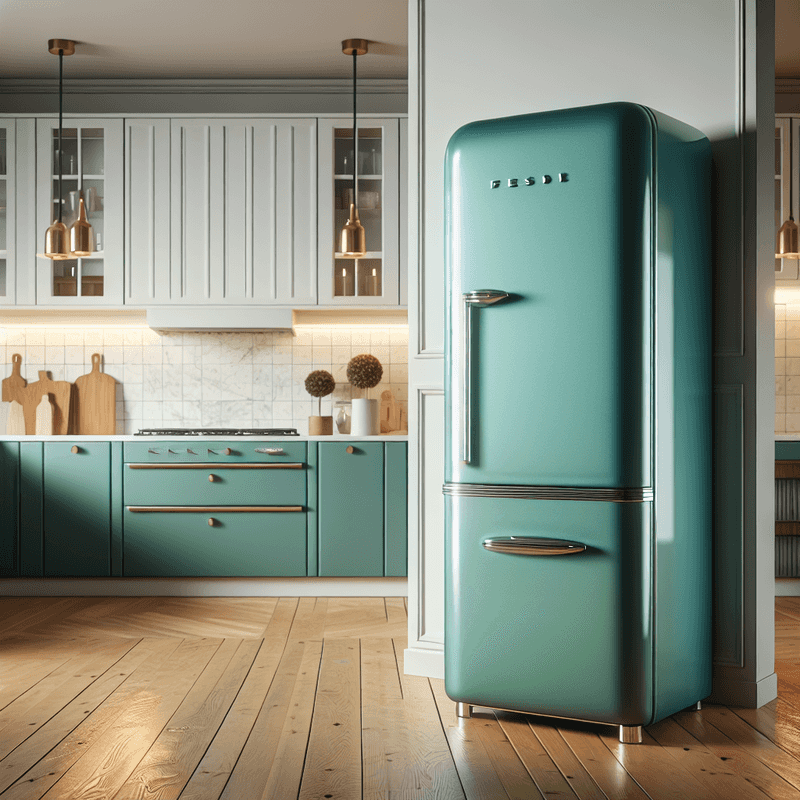
Refrigerators with softly curved corners and rounded doors brought a friendly, approachable feeling to kitchens. Their organic shapes stood in deliberate contrast to the boxy appliances that preceded them.
These sculptural cooling machines often featured gleaming chrome handles and hardware that reinforced their status as kitchen centerpieces. The rounded aesthetic reflected mid-century optimism about technology and the future. Today’s designers recognize how these statement pieces can anchor retro-inspired kitchens with authentic period charm.
Modern versions from specialty manufacturers combine the beloved rounded silhouettes with energy-efficient cooling technology. When paired with contemporary cabinetry, these curvy classics create an intriguing dialogue between past and present that flat-front models simply can’t achieve.
15. Soft Yellow Kitchens
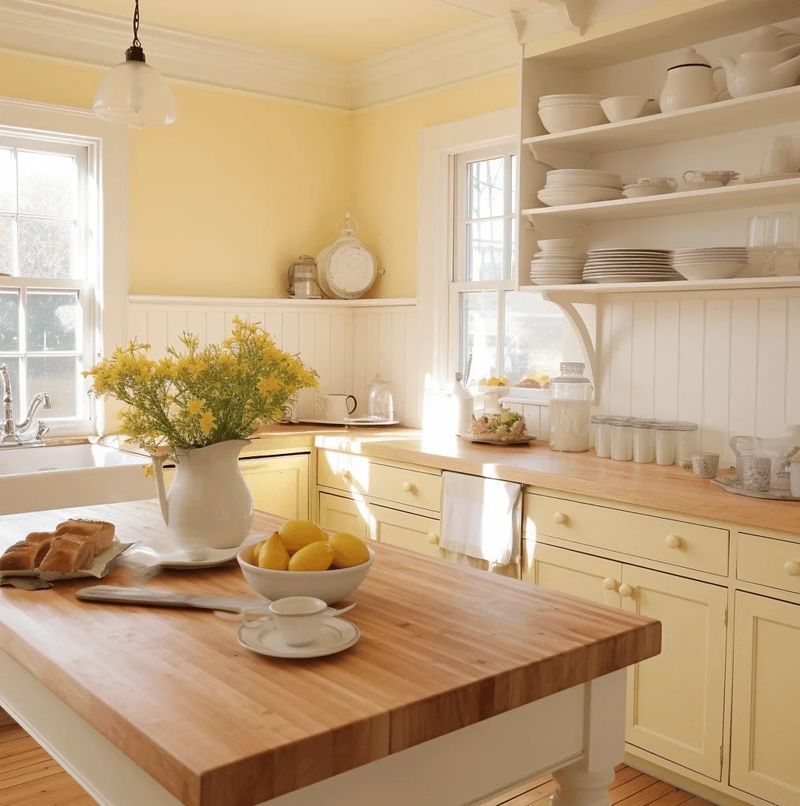
Butter-yellow walls and cabinets created sunlit atmospheres regardless of actual window exposure. This gentle hue was believed to stimulate appetite and conversation perfect for gathering spaces like kitchens. Unlike stark white kitchens that can feel clinical, soft yellow spaces radiated warmth and optimism.
The color complemented both the natural wood tones and colorful dishware popular in mid-century homes. Designers appreciate how this versatile shade bridges traditional and contemporary styles with ease.
Modern interpretations might limit yellow to a single wall or island for a more subtle approach. When paired with crisp white trim and natural elements, this happy hue creates spaces that feel both nostalgic and timeless – proving some color choices transcend passing trends.
16. Red-and-White Color Schemes
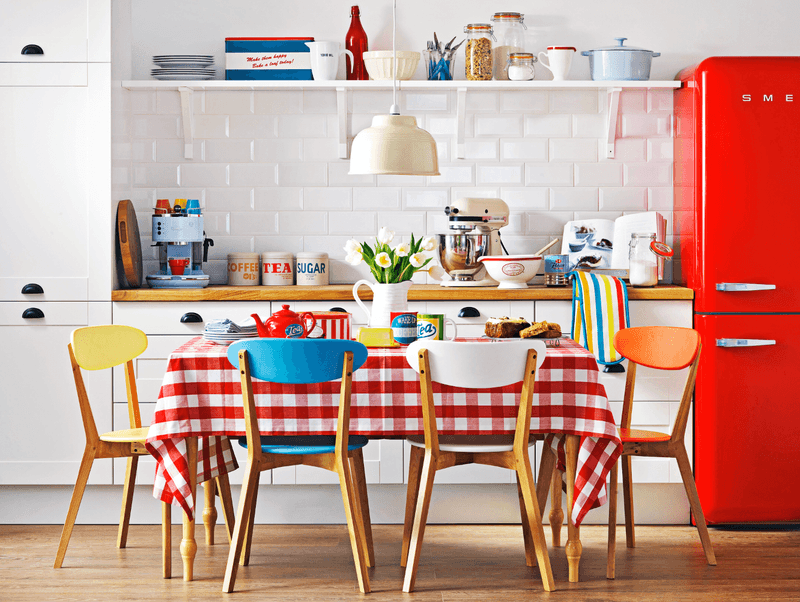
Bold red accents against crisp white backgrounds created energetic, appetizing kitchens that felt both clean and cheerful. This high-contrast combination referenced classic diner aesthetics while remaining timeless.
Homemakers could easily update the look by swapping out dish towels, small appliances, or canisters as styles evolved. The simplicity of this two-color approach prevented visual chaos even in busy family kitchens. Contemporary designers value how this classic pairing can make small spaces feel more dynamic without overwhelming them.
Modern interpretations might incorporate softer berry reds or textured whites for depth. When thoughtfully applied, this nostalgic color combination references America’s optimistic post-war era while still feeling relevant for today’s homes.
17. Avocado Green Appliances
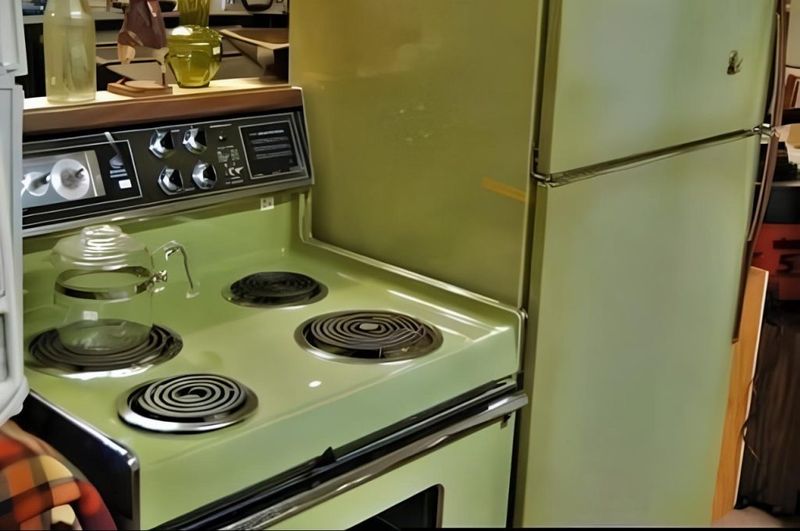
Perhaps no color defines dated kitchens more than the murky yellowish-green that dominated 1970s appliances. This unfortunate shade somehow managed to clash with virtually everything while drawing attention to utilitarian objects best left unnoticed.
Unlike true avocado’s natural beauty, this artificial approximation had an almost sickly quality that hasn’t improved with age. The color’s overwhelming presence on refrigerators, stoves, and dishwashers made kitchens feel smaller and darker.
While some might argue for the color’s historical significance, designers universally agree this particular shade deserves permanent retirement. Even in nostalgic renovations, this is one element best replaced with either modern stainless steel or genuinely vintage white appliances for a more timeless appeal.
18. Harvest Gold Everything

The mustard-adjacent shade known as “harvest gold” dominated 1970s kitchens from appliances to wallpaper to flooring. This pervasive color created monotonous, visually heavy spaces that felt perpetually stuck in autumn.
Unlike cheerful yellow or sophisticated gold, this muddy hue had a drab quality that made kitchens feel instantly dated. When combined with dark wood cabinets as it often was – the result was cave-like rather than cozy. Designers unanimously agree this particular color deserves to remain in vintage photographs rather than modern homes.
Even those embracing retro aesthetics tend to avoid this specific shade in favor of clearer, more timeless hues. Some design mistakes simply can’t be rehabilitated – harvest gold firmly belongs in this category.
19. Carpeted Kitchen Floors
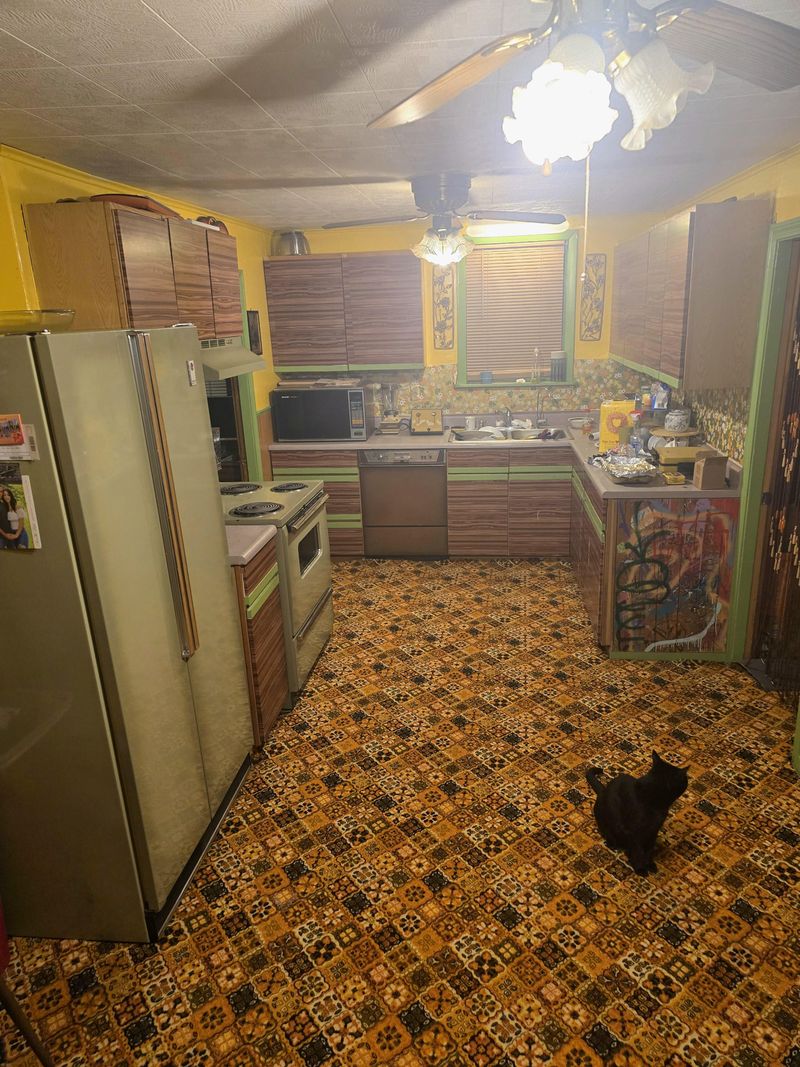
Few design choices demonstrate such clear disregard for practical reality as wall-to-wall carpeting in food preparation areas. This puzzling trend somehow gained traction despite kitchens being spaces where spills are inevitable.
Beyond the obvious cleaning challenges, carpet trapped cooking odors and moisture, creating potential health hazards. The material’s absorbent nature made stains permanent reminders of every dropped pasta sauce or spilled wine. Designers universally consider this concept fundamentally flawed rather than simply dated.
Even the most dedicated vintage enthusiasts draw the line at recreating this particular feature. Modern kitchens wisely stick to hard-surface flooring options that can handle the realities of cooking while still offering comfort through strategic placement of washable area rugs.
20. Faux Brick Backsplashes
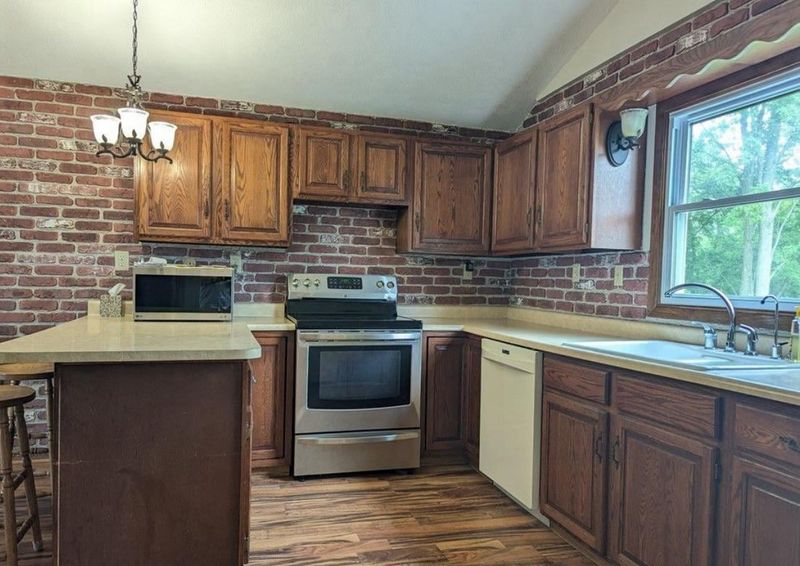
Thin plastic panels molded to imitate brick brought unconvincing texture to countless 1970s kitchens. These tacky substitutes fooled absolutely no one with their uniform color and suspiciously perfect edges. Unlike authentic brick which ages gracefully, these imposters yellowed, warped, and collected grease in their fake mortar lines.
The material’s flimsy nature meant edges often peeled away from walls, creating not just aesthetic but practical problems. Designers unanimously reject these unconvincing imitations as representing the worst of faux finishes.
Even budget-conscious renovations today have better options like ceramic tile or painted beadboard. Those seeking genuine brick character would be better served by a single exposed brick wall than these unconvincing plastic pretenders.
21. Busy Fruit-and-Veg Wallpaper
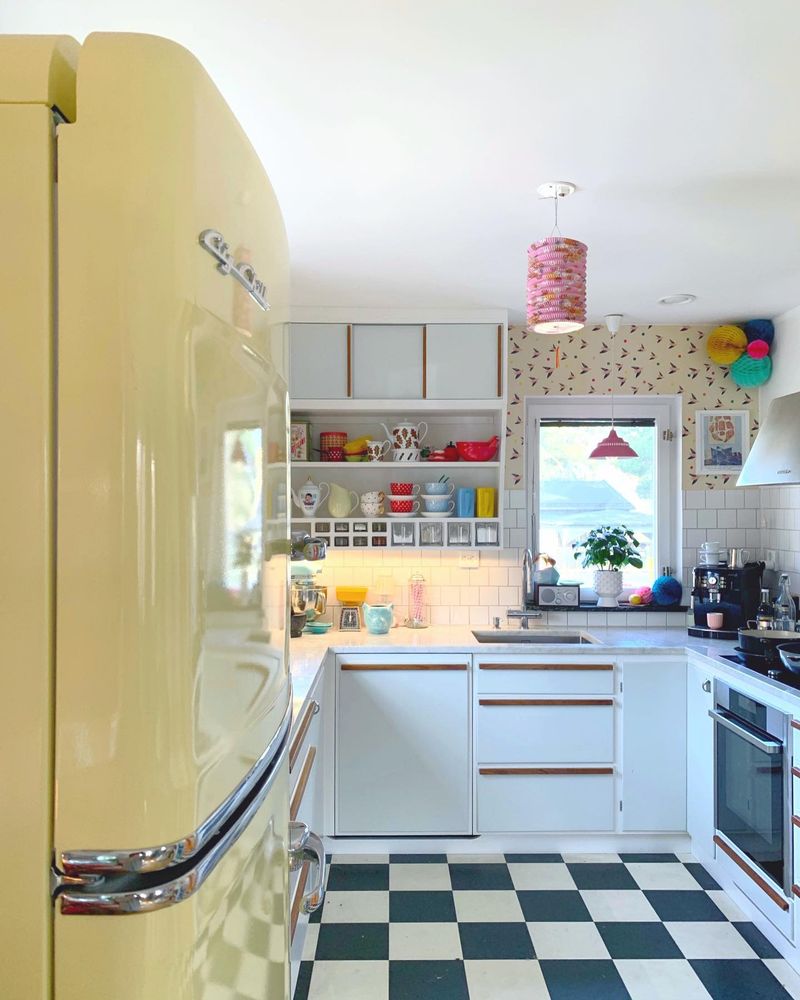
Overwhelming patterns featuring oversized produce created visually chaotic kitchens that aged poorly. These busy designs – often featuring giant strawberries, mushrooms, or vegetable medleys – made small spaces feel cluttered before any actual cooking began.
The literal food imagery lacked subtlety and imagination while limiting other decorative choices. Colors typically faded unevenly, leaving sad, discolored fruits eternally stuck in a state of decay on kitchen walls. Designers universally agree that food belongs on plates rather than as repetitive wall motifs.
Modern kitchens might incorporate botanical elements in more sophisticated ways through artwork or small accessories. Those seeking vintage charm have better options like geometric patterns or abstract designs that reference the era without the visual indigestion.

